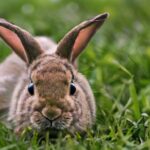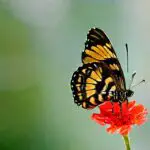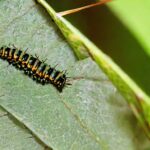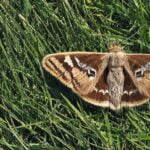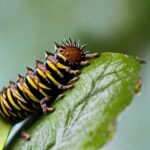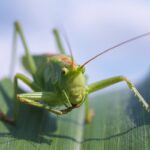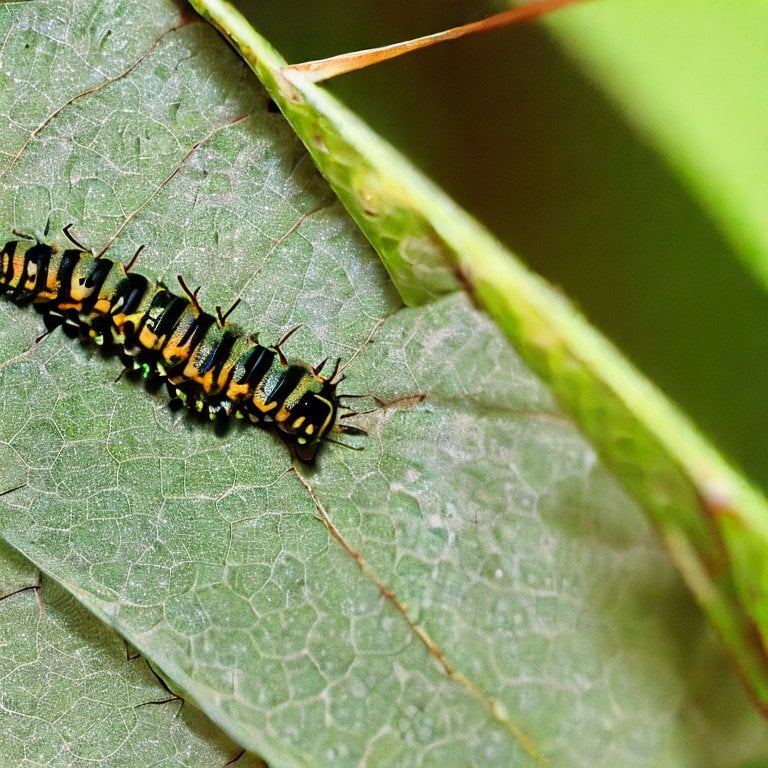
Insects are known to feed on a wide variety of plant species, including shrubs. Some common examples of insects that feed on shrubs include aphids, caterpillars, and leaf beetles.
Insects that Feed on Shrubs
Aphids are small, sap-sucking insects that can cause damage to both the leaves and stems of shrubs. They are often found in large numbers and can quickly defoliate a shrub if left unchecked.

Caterpillars, the immature stage of butterflies and moths, can also cause significant damage to shrubs by feeding on the leaves. Some species, such as the gypsy moth, can defoliate entire shrubs in a short period of time. (See Are Caterpillars Herbivores?)
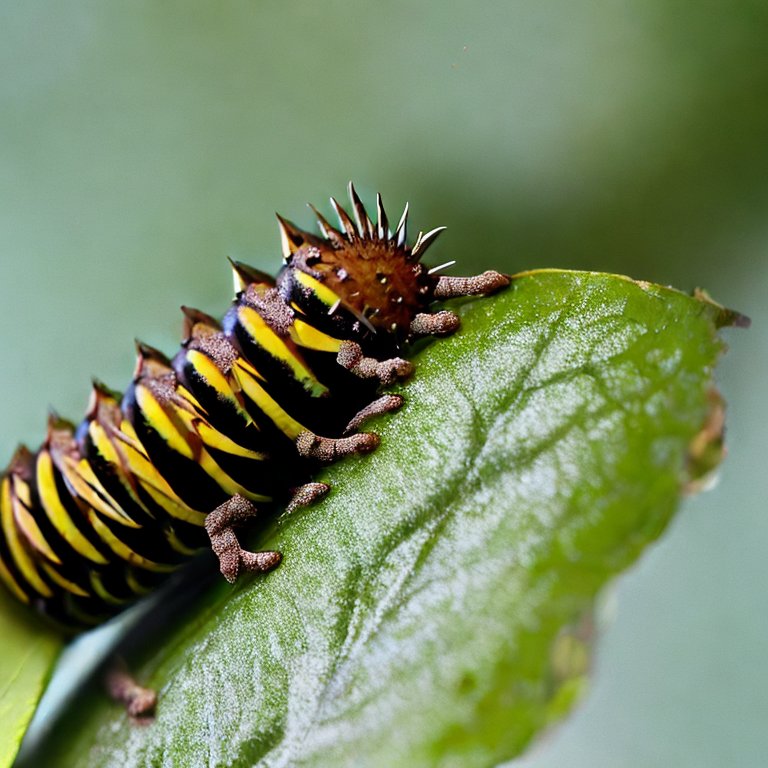
Leaf beetles, which are small, colorful beetles that feed on the leaves of shrubs, can also cause damage to shrubs. They can cause the leaves to turn yellow or brown, and in severe cases, can defoliate the shrub.
In addition to these common examples, there are many other species of insects that feed on shrubs. For example, the rose slug, which is the larval stage of a sawfly, feeds on the leaves of roses and other shrubs, leaving a characteristic “skeletonized” pattern on the foliage.
The viburnum leaf beetle feeds on the leaves of viburnum shrubs, causing the leaves to turn brown and fall off. The boxwood leaf miner, as the name implies, feeds on the leaves of boxwood shrubs, causing yellow or brown blotches on the foliage.
It is important to note that not all insects that feed on shrubs are considered pests. Some insects, such as bees and butterflies, are important pollinators that help to maintain the health of shrubs and other plants. Additionally, many insects are important food sources for other animals, such as birds and bats.
Controlling Insects that Feed on Shrubs
To control insects that feed on shrubs, it is important to first identify the specific species that is causing the damage. This can often be done by examining the damage or by observing the insects themselves.
Once the species has been identified, appropriate control measures can be taken. This can include using insecticides, such as neem oil or horticultural oil, which can be applied to the foliage of the shrub to control the pests.
Another way to control pests is by using natural predators such as ladybugs, lacewings, and parasitic wasps. These insects feed on common shrub pests, such as aphids and caterpillars, and can help to keep their populations in check.
In addition to controlling pests, it is also important to maintain the overall health of the shrubs. This can be done by providing the shrubs with the proper amount of water, fertilizer, and light, as well as by pruning the shrubs to remove any dead or damaged branches.
Final Thoughts
Insects can eat shrubs and cause damage to them. Common examples include aphids, caterpillars, and leaf beetles. It is important to identify the specific insect causing the damage and take appropriate control measures such as using insecticides, natural predators, and maintaining the overall health of the shrubs.
Lance has been passionate about the plant-based diet and we have been following a whole food plant-based diet for over 5 years. We focus on health, natural healing, weight management, animal rights, and the health of the planet and environment by focusing on whole plant-based foods and sustainable practices.
Learn more at the About Me page and follow on social media at the links below.

